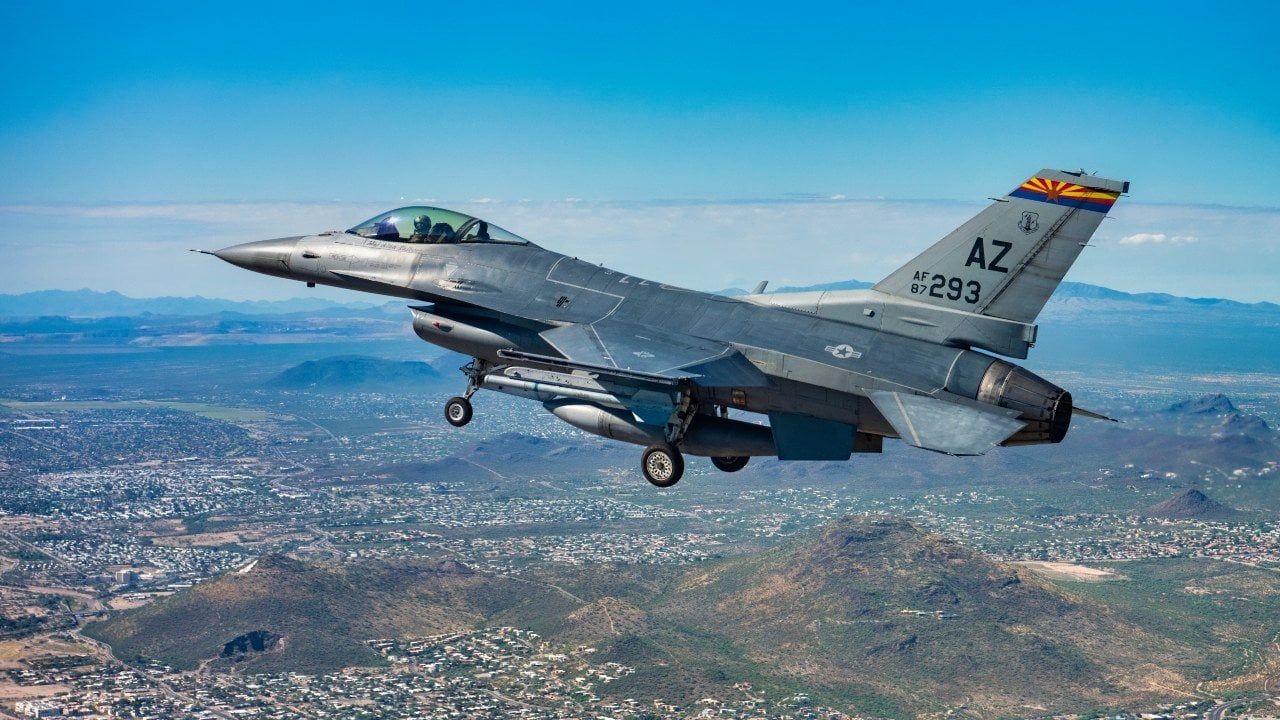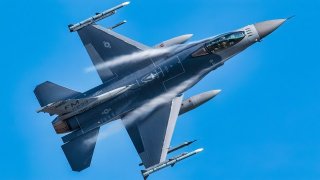No Silver Bullet: F-16 Fighters Won't Win the War for Ukraine
While the Fighting Falcon may possess critical capabilities, some experts are not convinced that the presence of F-16s in Kyiv will really impact the war in a significant way
Earlier this month, a senior Ukrainian military official claimed that the incoming shipments of F-16 fighter jets set to arrive this year are “no longer relevant.”

According to The Defense Post, the high-ranking official explained that by the time Kyiv receives requested weapons, shipments are so delayed that they are no longer useful for its forces. Ukrainian president Volodymyr Zelenskyy has been requesting advanced Western fighter jets since the invasion first kicked off in early 2022.
The United States refused to permit the delivery of these fourth-generation airframes for many months, noting that the transfer could escalate tensions with Moscow. However, after months of heavy pressing, the White House reversed this policy and green-lit the delivery of Fighting Falcons to Ukraine.
Greece could become the largest international provider of F-16s for Ukraine
Greece recently announced its plans to provide the largest international supply of F-16s to Ukraine. As part of the potential deal, thirty-two F-16C/D airframes and twenty-four Mirage 2000-5 Mk.2 platforms could end up on the frontlines of the war later this year. This news follows Kyiv’s frequent requests for international supply partners to send over fighter jets in an effort to push back Russian defenses. However, other F-16s provided by Denmark are not expected to arrive until later this summer—which is almost a full year after the Biden administration first approved both Denmark and the Netherlands to deliver these airframes to Kyiv.
Athens’ decision to offload these airframes coincides with its goal of completely modernizing its Air Force. The sale of older airframes will provide Greece with additional funds it can then allocate to newer platforms.
As the country gears up to streamline its military capabilities for the twenty-first century, it will look to upgrade its remaining Fighting Falcon fleet with forty fifth-generation F-35 Lightning II jets if approved by the U.S. Congress.
A brief overview of the Fighting Falcon
The F-16 was initially developed for the U.S. Air Force back in the 1970s, incorporating lessons learned from the service’s aerial experiences in both the Vietnam and Korean wars. Since the platform’s introduction to service nearly five decades ago, it has remained a key component of the Air Force. The supersonic multirole fighter was developed by manufacturer General Dynamics as an air superiority day fighter but later evolved into an effective all-weather multirole platform.

The revered airframe underwent several facelifts over the years to retain an edge over competitors. Today, the latest iterations are equipped with an array of cutting-edge systems and capabilities, including an Active Electronically Scanned Array radar capable of tracking up to twenty targets at the same time.
Will the F-16 fighter platform alter the war trajectory in Ukraine?
While the Fighting Falcon may possess critical capabilities, some experts are not convinced that the presence of F-16s in Kyiv will really impact the war in a significant way. A group of analysts detailed that the total number of these fourth-generation jets that could actually operate in Ukraine is likely far too small to make a strategic difference across the front lines of the conflict. A senior lecturer in law and war studies at Portsmouth University in the United Kingdom also asserted that these airframes would be an “absolute magnet for Russian air defenses and Russian aircraft.” Moscow possesses an advanced arsenal of air defense systems and surface-to-air missiles that essentially turn Ukraine’s F-16 fighters into sitting ducks for attacks.
Additionally, Ukraine will need more training, munitions, spare parts, and infrastructure as it accumulates more Fighting Falcon airframes. Constructing runways and facilities equipped to operate these fighters is a timely and costly endeavor.
As F-16s continue to roll into Kyiv, other essential weapons and military systems are missing from Ukraine’s fighting arsenal. The most prominent shortage at the moment is ammunition for the Western artillery and weapons that have been delivered to Kyiv over the last two-plus years. Officials have claimed that it is becoming more challenging to hold back Moscow’s defense as its supply of shells is running low. If the influx of additional Fighting Falcons would not be appreciated by Ukrainian officials, perhaps increased munitions shipments would be a welcomed add-on.
About the Author: Maya Carlin
Maya Carlin, National Security Writer with The National Interest, is an analyst with the Center for Security Policy and a former Anna Sobol Levy Fellow at IDC Herzliya in Israel. She has by-lines in many publications, including The National Interest, Jerusalem Post, and Times of Israel. You can follow her on Twitter: @MayaCarlin.
Image Credit: Shutterstock.


